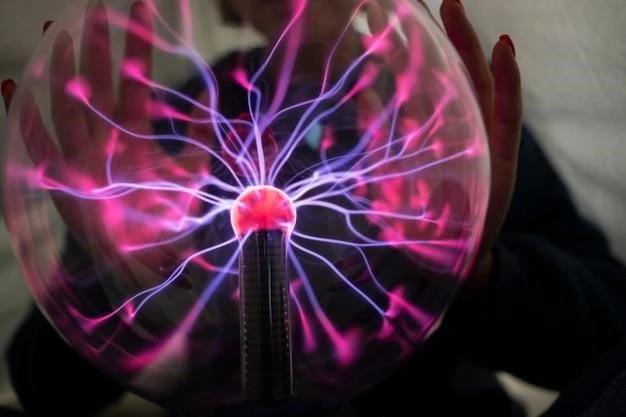Exencephaly
Exencephaly is a rare neural tube defect that results in cranial malformation due to improper brain development. This congenital abnormality is predominantly caused by genetic mutations affecting the closure of the neural tube.
I. Overview of Exencephaly
Exencephaly is a severe neural tube defect that occurs during early embryonic development‚ leading to a range of cranial malformations. This rare condition is a type of anencephaly where the neural tube that forms the brain and spinal cord fails to close completely. As a result‚ a portion of the brain protrudes through an opening in the skull‚ usually in the form of a sac-like structure.
Exencephaly is classified as one of the most extreme manifestations of neural tube defects‚ impacting the proper development of the brain. The exposed brain tissue is not covered by bone or skin‚ leaving it susceptible to damage and infection. This condition is typically detected early in pregnancy during routine ultrasound examinations.
Despite its rarity‚ exencephaly represents a significant challenge due to its profound impact on brain formation and function. Infants born with exencephaly are not viable as the exposed brain tissue is not compatible with life‚ usually resulting in stillbirth or neonatal death shortly after birth.
Research into the underlying causes of exencephaly focuses on genetic mutations that disrupt the intricate processes involved in neural tube closure. By understanding the genetic factors contributing to this condition‚ scientists aim to develop preventive strategies and potential treatments to reduce the occurrence of exencephaly and improve outcomes for affected individuals.

II. Causes of Exencephaly
Exencephaly is primarily caused by genetic mutations that disrupt the normal development of the neural tube during the early stages of pregnancy. The neural tube is a crucial structure that eventually forms the brain and spinal cord in the developing embryo.
Specific genes involved in regulating the closure of the neural tube play a vital role in preventing conditions like exencephaly. Mutations in these genes can impede the proper fusion of the neural tube‚ leading to incomplete closure and subsequent malformation of the brain.
Environmental factors such as folic acid deficiency or exposure to certain chemicals during pregnancy can also contribute to the development of neural tube defects like exencephaly. Ensuring an adequate intake of folic acid before and during pregnancy is essential for reducing the risk of these abnormalities.
While genetic mutations are a key factor in the pathogenesis of exencephaly‚ the interplay between genetic predisposition and environmental influences remains a subject of ongoing research. Understanding the complex interactions between genetic and environmental factors is crucial for developing effective prevention strategies and potential treatments for this devastating condition.
III. Developmental Aspects
Exencephaly has profound implications for the normal development of the central nervous system‚ particularly the brain‚ during embryonic growth. The failure of the neural tube to close properly leads to the abnormal protrusion of brain tissue through the skull. This malformation disrupts the formation of critical brain structures and impairs the functionality of the affected areas.
During typical development‚ the neural tube forms early in pregnancy and closes to protect the brain and spinal cord as they develop; However‚ in cases of exencephaly‚ this closure process is disturbed‚ resulting in the exposure of the developing brain to the amniotic fluid and other external influences.
The exposed brain tissue in exencephaly is vulnerable to injury‚ infection‚ and damage due to its lack of protection from the surrounding environment. Without the necessary covering of bone and skin‚ the affected brain regions are unable to develop and function normally‚ leading to severe complications and often fatal outcomes.
Understanding the developmental aspects of exencephaly is crucial for devising interventions that can potentially prevent or mitigate the impact of this condition on the developing central nervous system. Research efforts aimed at elucidating the sequence of events that lead to exencephaly contribute to advancing our knowledge of neural tube defects and exploring novel therapeutic approaches to address these developmental abnormalities.
IV. Diagnosis and Treatment
Diagnosing exencephaly typically occurs during routine prenatal ultrasound examinations‚ where the characteristic features of the condition‚ such as the protrusion of brain tissue through the skull‚ are visualized. Genetic testing may be recommended to identify any underlying mutations associated with neural tube defects like exencephaly.
Unfortunately‚ exencephaly is incompatible with life‚ and there are no curative treatments available. As the exposed brain tissue lacks protection and normal development is severely compromised‚ efforts to surgically correct the malformation are not feasible. Instead‚ the focus shifts towards providing supportive care to the affected pregnancy.
Decision-making regarding the management of exencephaly involves discussions between healthcare providers and parents to ensure informed choices aligned with the best interests of the unborn child and the family. Palliative care measures may be implemented to support the family emotionally and ensure comfort for the infant in cases where a live birth occurs.
It is essential to provide comprehensive and compassionate care to families affected by exencephaly‚ offering support services‚ counseling‚ and guidance throughout the challenging journey of coping with the diagnosis and its implications. While the prognosis for individuals with exencephaly is grave‚ the focus on dignified care and support remains paramount.
V. Craniofacial Abnormalities Associated with Exencephaly
Exencephaly is characterized by severe craniofacial abnormalities due to the protrusion of brain tissue through the skull. The exposed brain tissue lacks the protective covering of bone and skin‚ leading to visible deformities in the affected area.
Common craniofacial anomalies associated with exencephaly include a visible sac-like structure containing brain tissue‚ often located at the top of the head where the skull failed to close properly. This abnormality results in a prominent bulge that is easily identifiable during prenatal ultrasound examinations.
Additionally‚ the absence of cranial bones covering the exposed brain can lead to significant disfigurement of the facial features‚ creating a striking visual representation of the underlying brain malformation. These abnormalities are a direct result of the disrupted neural tube closure process during early embryonic development.
While the craniofacial abnormalities in exencephaly are profound and visually apparent‚ they reflect the intricate interplay between brain development and skull formation. Understanding the complexities of these anomalies is essential for diagnostic purposes and provides valuable insights into the underlying pathophysiology of neural tube defects like exencephaly.
VI. Prognosis and Complications
The prognosis for individuals with exencephaly is sadly bleak due to the severity of the condition. Exencephaly is considered incompatible with life‚ and most affected pregnancies result in either stillbirth or neonatal death shortly after delivery.
Complications associated with exencephaly stem from the exposed brain tissue’s vulnerability to damage‚ infection‚ and external influences. The lack of protection for the developing brain leads to significant neurological impairments and poses substantial challenges for viable outcomes.
Neonates born with exencephaly face a host of complications‚ including respiratory difficulties‚ feeding challenges‚ and the inability to sustain basic life functions. The absence of critical brain structures and the compromised central nervous system contribute to the poor prognosis and limited survival expectations.
Despite advances in medical technology and care‚ the complexities of exencephaly present insurmountable obstacles to achieving positive outcomes. The profound impact of this condition on both the affected individual and their families underscores the critical need for compassionate support and end-of-life care measures.
VII. Prevention Strategies
Preventing exencephaly involves comprehensive strategies aimed at reducing the risk factors associated with neural tube defects. One of the primary prevention methods is ensuring adequate folic acid intake before and during early pregnancy‚ as folate plays a crucial role in neural tube closure and proper brain development.
Healthcare providers may recommend folic acid supplementation for women of childbearing age to decrease the chances of neural tube defects like exencephaly. Access to prenatal care and genetic counseling can also aid in identifying individuals at higher risk due to genetic predispositions or prior history of neural tube defects.
Education and awareness campaigns highlighting the importance of preconception health and early pregnancy planning can empower individuals to make informed choices that support optimal neural tube formation. Avoiding exposure to harmful substances and maintaining a healthy lifestyle further contribute to reducing the likelihood of neural tube abnormalities.
Community-based initiatives promoting healthy pregnancies and providing resources for expectant mothers can play a significant role in preventing conditions like exencephaly. By addressing modifiable risk factors and promoting a supportive environment for maternal and fetal health‚ the incidence of neural tube defects can be reduced‚ ultimately leading to improved outcomes for both mothers and babies.
VIII. Current Research and Future Directions
Ongoing research into exencephaly focuses on elucidating the intricate genetic mechanisms underlying neural tube defects and brain malformations. Scientists are exploring novel approaches to studying gene mutations that disrupt neural tube closure‚ aiming to uncover potential therapeutic targets and preventive strategies.
Advancements in genetic sequencing technologies have allowed researchers to identify specific genes involved in neural tube development‚ shedding light on the molecular pathways implicated in conditions like exencephaly. By understanding the genetic basis of these defects‚ targeted interventions may be developed to address the root causes of abnormal brain formation.
Future directions in exencephaly research include the exploration of gene-editing techniques such as CRISPR-Cas9 to correct genetic mutations associated with neural tube defects. This cutting-edge technology holds promise for potential gene therapies that could prevent or mitigate the effects of exencephaly by restoring proper neural tube closure and normal brain development.
Collaborative efforts between geneticists‚ developmental biologists‚ and clinicians aim to translate research findings into clinical applications that benefit individuals at risk of neural tube defects. By fostering interdisciplinary collaborations and leveraging innovative technologies‚ the field of exencephaly research seeks to pave the way for improved diagnostics‚ treatments‚ and ultimately‚ prevention strategies.
IX. Support Resources for Individuals with Exencephaly
Individuals and families affected by exencephaly may benefit from a range of support resources designed to provide emotional‚ practical‚ and informational assistance. Support groups and online communities dedicated to neural tube defects offer a platform for individuals to connect‚ share experiences‚ and find solidarity in their journey.
Genetic counseling services can provide valuable insights into the underlying causes of exencephaly‚ addressing concerns‚ and offering guidance on family planning and risk assessment. Counselors work closely with families to navigate the complexities of genetic conditions and make informed decisions regarding future pregnancies.
Healthcare professionals specializing in maternal-fetal medicine and neonatology play a crucial role in supporting individuals with exencephaly by offering compassionate care‚ clinical expertise‚ and guidance throughout the diagnostic and treatment process. These specialists work collaboratively to ensure comprehensive and individualized care for affected pregnancies.
Non-profit organizations and advocacy groups focused on neural tube defects may offer educational resources‚ financial assistance‚ and awareness campaigns to empower individuals impacted by exencephaly. By fostering a supportive network and raising public awareness‚ these organizations strive to improve outcomes and quality of life for those affected by rare congenital abnormalities.
X. Conclusion
In conclusion‚ exencephaly remains a devastating neural tube defect characterized by severe cranial malformations and profound implications for brain development. Despite its rare occurrence‚ exencephaly poses significant challenges due to its impact on the central nervous system and the lack of viable treatment options.
Understanding the genetic and environmental factors contributing to exencephaly is crucial for preventive strategies and potential therapeutic interventions. Current research endeavors aim to unravel the intricate mechanisms underlying neural tube defects‚ paving the way for innovative approaches to addressing these complex developmental abnormalities.
While the prognosis for individuals with exencephaly is grave‚ the provision of compassionate care and support resources is essential for affected families. By promoting awareness‚ fostering interdisciplinary collaborations‚ and advocating for improved resources‚ we can strive to enhance the quality of life for individuals affected by this rare congenital abnormality.
Moving forward‚ continued efforts in research‚ advocacy‚ and support services are paramount in advancing our knowledge of exencephaly and working towards better outcomes for affected individuals. By uniting efforts across scientific‚ medical‚ and community realms‚ we can strive towards a future where the prevention and management of exencephaly are more effective‚ ultimately improving the well-being of those impacted by this challenging condition.
